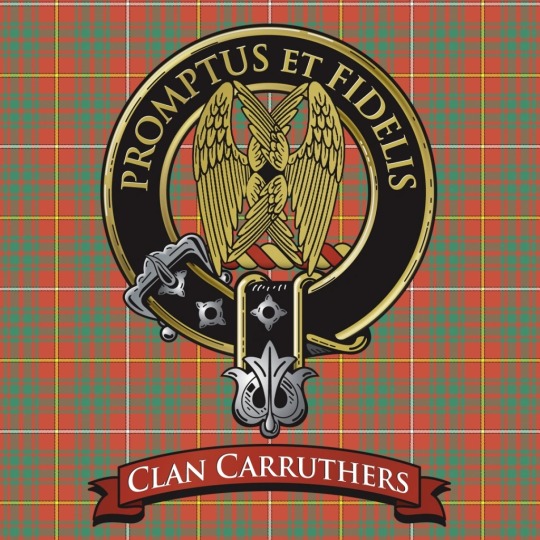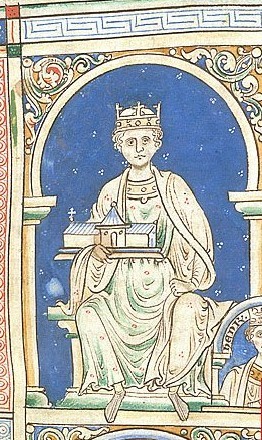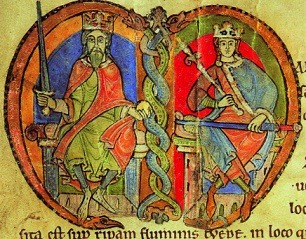#aELRED cARLISLE
Text
THE MONASTERIES OF SCOTLAND - CLAN CARRUTHERS CCIS
THE MONASTERIES OF SCOTLAND
PREFACE
Many years ago I became fascinated by the re-introduction of the monastic life in the Church of England having in 1956 read a book by Peter Anson entitled “The Call of the Cloister”. Anson had been a novice in the community of Anglican Benedictines which had been founded in 1896 by one Aelred Carlisle as an attempt to once again establish the Benedictine…

View On WordPress
#abroath abbey#aELRED cARLISLE#ANCIENT AND HONORABLE CLAN CARRUTHERS#APPLECROSS#ardchattan priory#aroath abbey#BARDSEY#CLONMACHNOISE#CO DONELGAL IRELAND#Coldingham#crossraguel cluniac#culdees#CULDRRS#deer abbey#fybie priory#iona#kilwinning tironian abbey#Oronsay priory#restenneth priory#saddel prioty#ST AIDAN#ST BEDE#ST COLUMCILLE#ST NINIAN#ST PACHOMIUS#st thomas becket#TALLAGH#trinitarian friars
0 notes
Photo


On August 22nd 1138 The Battle of the Standard was fought.
Also known as the Battle of Northallerton, this was actually an English battle, but King David I got involved in support of Matilda, claimant of the English throne, against the English King Stephen. He was also wanting to extend his Kingdom.
Let's not beat about the bush, this was an attempt to take some territory from Northern England, and it was savage.
The actions of the army that invaded England in early 1138 shocked the English chroniclers and at the main one in England was Richard of Hexham. Chroniclers were, in the main Holy men, who wrote down the history as it was happening, it was as near a newspaper of the times and an invaluable source for any historian, be it professional or just an amateur like me.
Richard of Hexham wrote of the Scottish invaders......
..an.execrable army, more atrocious than the pagans, neither fearing God nor regarding man, spread desolation over the whole province and slaughtered everywhere people of either sex, of every age and rank, destroying, pillaging and burning towns, churches and houses".
The Scots would not kill all before hem, some were captured as slaves, these were a valuable commodity, another part of the chronicle tells us tales of sexual abuse of the slaves and casual slaughter of unsalable encumbrances:
"For the sick on their couches, women pregnant and in childbed, infants in the womb, innocents at the breast, or on the mother's knee, with the mothers themselves, decrepit old men and worn-out old women, and persons debilitated from whatever cause, wherever they met with them, they put to the edge of the sword, and transfixed with their spears; and by how much more horrible a death they could dispatch them, so much the more did they rejoice."
With Stephen busy fighting rebel barons in the south of the country, it was left to a mainly locally raised force to repel the invading Scots. Thanks in a large part to Archbishop Thurstan of York, who preached that to withstand the Scots was to do God’s work, an English army of around 10,000 men was recruited.
Another chronicler Aelred of Rievaulx gave a description of the Scottish army.....
" men agile, unclothed, remarkable for much baldness (shaven heads?); arming their left side with knives formidable to any armed men, having a hand most skillful at throwing spears and directing them from a distance; raising their long lance as a standard when they advance into battle"
He also says that our King was on foot, like most of his army.
t the head of the English army was a mast mounted on a cart proudly flying the consecrated banners of the minsters of Beverley, Ripon and York, earning the battle its name. As seen in the illustration.
The English took up their position across the Great North Road a few miles north of Northallerton, blocking the Scots advance southwards. Attempting a surprise early morning attack, King David found the English well prepared and waiting for him.
The battle began with a charge by the unarmoured ‘wild’ Galwegian spearmen, who fell in large numbers under the hail of English arrows. The Galwegians finally fled when two of their leaders were killed.
Although greatly outnumbered, the English resisted several sustained Scottish attacks. Fierce hand to hand fighting continued for around three hours until the Scottish lines broke and retreat turned into a rout. The victorious Yorkshiremen however, failed to take full advantage of the rout allowing many of the Scots to escape and regroup at Carlisle.
battven though the Scots lost the battle, they would control northern England for the next 20 years.
If you want to read more of Richard of Hexham's account of the battle just click HERE
Pics are the memorial to the battle and a 19th century depiction of the "Standard" the English took into the fray.
17 notes
·
View notes
Quote
Six sons and two daughters were born to Queen Margaret. Three of the sons, Edgar, Alexander, and the noblest of his family, David, were kings. Edgar was a pleasant and lovable man, like his kinsman King Edward in everything. He did nothing tyrannical, nothing harsh, nothing avaricious to his people, but governed his subjects with the greatest charity and benevolence. What is more, Alexander was humble and lovable to clerics and monks but dreadful beyond measure to his other subjects. [David] was a great-hearted man, extending himself beyond his powers in everything. He was educated, and he was extremely zealous in regulating the churches, in searching out the relics of saints, in making and arranging priestly vestments and sacred books. He was in fact so devoted to the poor that in nothing did he seem to take more pleasure than in receiving, washing, nourishing, and clothing them.
But we have digressed somewhat in the foregoing description of what we feel about King David. The sister of these men, Matilda, married the most glorious king of the English, Henry. Anyone who wants to write about her wonderful renown and her strength of mind, how assiduous and devoted she was at the divine offices and holy vigils, how humble she was, especially considering her great power, will show us another Esther in our own time.
(...)
The sister of this blessed woman, Maria by name, was given as wife to Count Eustace of Boulogne. Of this excellent and Christian queen [Matilda] was born Matilda, who first married the Roman emperor, then the noble count of Anjou, Geoffrey. Of Maria was born Matilda who was given in marriage to him who was then the count of Morocco; she is now the wife of Stephen, king of the English. By the arrangement of King Henry, King David took to wife Matilda the daughter of Count Waltheof and Judith, who was granddaughter of King William the First. From her he received his son Henry, a man gentle and devout, a person of sweet spirit and cheerful heart and worthy in every way to be born of such a father. I lived with him from the very cradle. I grew up with him, boys together, and even when we were both adolescents I knew him. To serve Christ I left him while he was stamping out the flowers of youth, as I did his father, whom I loved beyond all mortals, at that time illustrious in the flower of old age. I left them bodily, but never in heart.
These are the ones which survive from that holy generation. From the Empress Matilda you [Henry of Anjou] came, most illustrious man, whom we now hail as Duke of the Normans and of the Aquitainians, Count of the Angevins, and truly heir to England. Your brothers are Geoffrey and William, of whom we hope for good things, to whom we wish the best. From Queen Matilda and the devout King Stephen came William, count of Warenne and Boulogne. From Henry [of Scotland] came Malcolm, William, and David, heir to his grandfather's name. May God have mercy on their childhood, and may you too be merciful, whom divine loving-kindness has established as the most noble head of your whole people. May your holy gaze, your loving heart, and your effective action be upon them in all their necessities. They are orphans, left to you by their grandfather, who loved you above all people; you will be a helper to these your wards, for you are in age more mature, in hands stronger, and in feeling more mature than they.
Aelred of Rievaulx, in his Genealogy of the Kings of the English, translated by J.P. Freeland.
I don't usually quote at length on this blog but I'm being lazy tonight and thought I'd share this.
Ailred of Rievaulx, mostly famous for his spiritual treatises but also the author of several historical works, was born in Hexham, Northumberland, but spent much of his youth at the court of David I of Scotland, where he rose to the position of court steward. As he himself testifies, this meant growing up alongside David’s son, Henry of Scotland, and though he eventually left the Scottish court to enter Rievaulx Abbey, Ailred seems to have remembered both David and Henry fondly.

(Henry II of England)
In 1153, Ailred completed his ‘Genealogy of the Kings of the English’, which was the same year that David I died in his castle of Carlisle. The genealogy was dedicated to David I’s great-nephew Henry, Count of Anjou, and then heir to the English throne (he would succeed as king of England the following year). Through his maternal grandmother, Matilda of Scotland, David’s elder sister and the daughter of St Margaret, Henry II was descended from the House of Wessex, thus uniting both the old Anglo-Saxon ruling house of England, with the House of Normandy (Henry being descended also from William the Conqueror). As well as this, though, Henry had been knighted by his great-uncle David at Carlisle in 1149, and in his preface to the genealogy Ailred names Henry as the heir to David’s spirit, expressing his hope that he would mould himself in his great-uncle’s image.
As the genealogy was dedicated to Henry II, Ailred narrates his descent from St Margaret, among others, describing the virtuous lives of several of her children, three of whom became kings of Scots in their own right (as named above, Edgar, Alexander, and David). The other three sons, who are not named here, were her eldest Edward, who died alongside his father Malcolm III at the Battle of Alnwick, Aethelred the lay abbot of Dunkeld, and Edmund, whom William of Malmesbury claims was the only son of Margaret to fall from grace through his role in the death of his half-brother Duncan II and who may have been briefly regarded either as co-king or tanaiste by his uncle Donald Ban. The daughters meanwhile were Edith or Matilda, who married Henry I of England and was the mother of William the Atheling and the Empress Maud, and Mary, who married the Count of Boulogne, and was the mother of King Stephen’s queen, also Matilda. Henry II was the eldest son of Empress Maud, and was eventually named Stephen’s successor. After a period of civil war, hopes must have been high for the young but capable Henry to bring peace and order to the kingdom, and Ailred seems to give voice to these hopes.

(David I and his grandson Malcolm IV in the Kelso Charter)
Meanwhile in Scotland, David I had died in 1153. The previous year, his only son Henry of Scotland had beaten him to the grave, leaving behind several children by his wife Ada de Warenne. Malcolm, the eldest, was to succeed his grandfather as king of Scots at the tender age of twelve, and he himself would die young in 1165, having lived an apparently chaste and pious life. He was to be succeeded in turn by his brother William, who was of a very different character, though in 1153 both boys were still children and succession by primogeniture to the Scottish throne was far from certain, though fortunately for Malcolm IV he succeeded in comparative peace. Thus Henry II is charged- at least rhetorically- with protecting the interests and moral development of the boys, though in the end relations between Henry and his young cousins would not always be friendly. Also mentioned in the list of Henry of Scotland’s children is his posthumous son David, later Earl of Huntingdon and ancestor to the Balliol and Bruce kings, while Henry also had at least two daughters who survived to adulthood but are not named here- Margaret, Duchess of Brittany and later Countess of Hereford, and Ada, Countess of Holland.
The whole quote, though, I think is an interesting one from a man who had experience of both the English and Scottish kingdoms at a time when it may have seemed like relations between the two would be much friendlier than we usually assume in hindsight, and also as an indication of Ailred’s view of major figures of his time, particularly Henry II and David I and their relationship to a ‘holy generation’, as well as perhaps expressing hopes for the future that may well have been shared by many others in 1153.
(I skipped over the section where Ailred gives an anecdote relating to Matilda washing the feet of the poor, though it’s still of interest that he claims that David I was his source, but I didn’t want to go on for too long).

(Ailred of Rievaulx being presented to Edward the Confessor, in a fourteenth century copy of his life of that saint)
#Scottish history#English history#Henry II#Aelred of Rievaulx#twelfth century#David I#House of Dunkeld#House of Canmore#Kings and Queens#Quotes#Primary Sources#Henry of Scotland#Malcolm IV#William I#Empress Matilda#Matilda of Scotland#Henry I of England#St Margaret of Scotland#Mary Countess of Boulogne#Matilda of Boulogne#stephen of blois#Plantagenets
74 notes
·
View notes